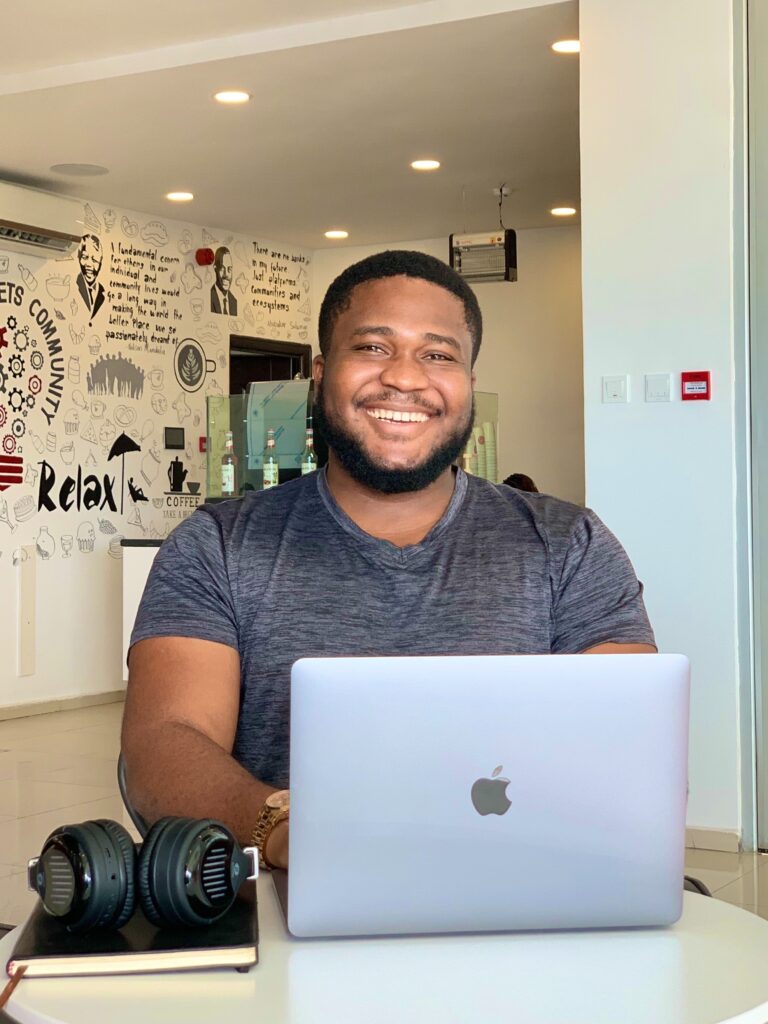WHITEPAPER
The Path to Talent Acquisition Maturity
THE PATH TO TALENT ACQUISITION MATURITY
Is identifying, attracting, and retaining top talent a priority for you?
Chances are it’s an important topic – high on your agenda. And that’s great to hear because we know how vital talent acquisition (TA) is to a business, and its overall success.
But the path to talent acquisition maturity isn’t straight-forward. It’s no longer enough to simply fill vacancies. And there are a whole host of factors and moving parts to navigate in a space that never stands still.
It’s not the first time we’ve explored this fascinating topic. We first touched on it in this blog, but with so much to cover, we’ve taken a deeper dive.
So why is talent acquisition maturity so important? And what does it take to get there?
If you’re an employer or recruiter looking for answers to these questions, and more, this document’s a must-read for you.
WHAT IS TALENT ACQUISITION MATURITY
In short, talent acquisition maturity can be defined as the level of sophistication and effectiveness in an organisation’s hiring process.
It’s not just about having a strategy in place, but more a measure of how well an organisation identifies, attracts, and retains top talent.
You don’t need us to tell you how competitive today’s job market is, so having a high level of talent acquisition maturity is crucial if you want to stay ahead of the curve and attract the very best candidates. With the ever-changing landscape of recruitment and the increasing demand for skilled workers – in just about every single sector – having a strong talent acquisition strategy has become essential.
But why does it matter so much? Well, a strong talent acquisition strategy will not only help you find the right candidates for your open positions but will also enable you to build a strong employer brand and retain your best employees.
And let’s not overlook the fact that having a high level of talent acquisition maturity can result in significant cost savings. Who doesn’t want that? A well-developed recruitment process reduces the time and resources spent on hiring new employees and can also lead to better long-term retention rates.
There’s technology as well. Having a high level of talent acquisition maturity allows you to use the wide range of recruitment tech that can support you to make better informed hiring decisions.
Ultimately, talent acquisition maturity is the key to keeping you ahead of the competition.
MEASURING (AND IMPROVING) TALENT ACQUISITION MATURITY
Talent acquisition maturity can be measured using various metrics such as time-to-fill, cost-per-hire, quality-of-hire, and retention rates. These metrics can help you work out how efficient and effective your hiring process is, plus identify any areas for improvement.
But you could also benchmark. Try comparing your recruitment practices, tools, and strategies with competitors or industry leaders, because benchmarking can provide valuable insights into areas where your organisation may be lagging.
Then, when you understand where you can improve your talent acquisition maturity, it’s time to take a strategic and holistic approach. This includes investing in modern recruitment tools, creating a strong employer brand, and implementing processes that prioritise candidate experience.
But TA doesn’t have to focus solely on external activity. Have you worked to develop your internal talent pool? Think learning and development programs that will nurture existing employees. By progressing existing employees, you could not only save time and resources on external hiring, but also boost employee engagement and retention.

THE EVOLUTION OF TALENT ACQUISITION
Historically, talent acquisition was largely transactional – a reactive function focused on filling vacancies as they occurred.
But today, there’s emphasis on attracting and nurturing talent as a key competitive advantage, and that’s seen hiring evolve into a strategic function that’s closely aligned with overall business objectives.
Talent acquisition is no longer just about hiring the right people. It’s about building a strong employer brand, creating an engaging candidate experience, and making the most of data and technology for improved decision-making. It’s a key end-to-end function involving so much more than proverbial ‘bums on seats.’ It’s about proactively identifying future hiring needs, building talent pipelines, and fostering relationships with potential candidates long before a position becomes available.
And that’s where working on your talent acquisition maturity comes into play… Reaching higher levels of maturity is not without its challenges, though.
These can include, but are not limited to:
- Rapidly changing roles
- Evolving market dynamics
- Technological advancements
- The need for continuous innovation
Any one of these can factors make the journey to talent acquisition maturity daunting – especially when you consider each stage requires a different set of skills, resources, and mindset, making it necessary for organisations to constantly adapt and evolve.
But there are steps you can take to make the journey to maturity feel less overwhelming. Have you heard of the RL100 Talent Maturity Model? You may have come across it already, because we’re fans and have previously spoken about it in this article. The RL100 model outlines the stages of evolution that an organisation goes through to reach its ultimate maturity in talent acquisition. It’s helping business leaders, like you, understand where they stand and what steps they need to take to progress.
But let’s not forget that talent acquisition never stands still. Even TA models like this are constantly evolving. And organisations need to strive to stay updated and adapt to these changes to remain competitive in their talent acquisition strategies.

HOW TA ROLES ARE EVOLVING
So, we’ve highlighted that TA never stands still and that the most successful business environments are those able to adapt and keep up with the changing space.
We’ve also touched on the fact that the most successful organisations are those that don’t just ‘fill vacancies’ but that recognise the strategic importance of finding and securing the right talent to drive their future growth and success.
But did you know that along with these shifts, the role of talent acquisition specialists has undergone a massive transformation too? TA is more frequently merging with talent management roles, focusing on internal mobility as a tactic for adapting to the changing job market.
THE CONVERGENCE OF TALENT ACQUISITION AND TALENT MANAGEMENT
There’s now often a blurring of lines between talent acquisition and talent management. Rather than operating in silos, these two functions are increasingly interlinked and mutually dependent.
Talent acquisition now extends beyond hiring to include onboarding, retention, development, and succession planning – areas traditionally associated with talent management. And conversely, talent management strategies now consider the full employee lifecycle, starting from the acquisition stage.
This convergence reflects companies taking a more holistic approach to talent strategy than ever before. They’re recognising that acquiring the right talent is just the first step in maximising potential and value.
“When organizations set up structure so employees can pursue their interests within the organization, studies show employees grow happier and retention rises.”
INTERNAL MOBILITY AND ITS IMPACT
The changing job market, often characterised by skills shortages and high turnover rates, is a key factor that’s influenced the evolution of talent acquisition. In response to these kinds of challenges, companies are increasingly focusing on internal mobility, i.e., promoting from within instead of always looking externally.
Internal mobility not only helps organisations retain their best talent but also encourages a culture of learning and development. It increases employee engagement and loyalty, ultimately leading to improved performance and productivity.
An article by Forbes, suggested that “When organizations set up structure so employees can pursue their interests within the organization, studies show employees grow happier and retention rises.”
The same article also cited a 2019 Deloitte report which “…described one organization that saw a nearly 30% increase in employee engagement after introducing an internal career program to help employees learn new skills and seek alternative roles.”
The piece went on to explain, “The same is true for retention. In 2020, LinkedIn found employees stay 41% longer at organizations with high internal hiring than those without. This data furthers the notion that internal mobility is key to navigating the tight talent market.”
In addition to these benefits, internal mobility reduces the time and cost associated with external hiring. Let’s not forget, recruiting can be expensive. The British Business Bank proposed that the average cost of hiring someone is around £3000. And that cost’s applicable every time an employee leaves your organisation!
Unless, of course, you have a robust internal mobility plan in place…
For most businesses, promoting internal mobility requires a shift in mindset. But if you’re one of those businesses, don’t panic. It’s the crux of this document and the reason we’re tackling the subject in such depth.
So many companies need to invest more time and effort in employee development, create clear career paths, and adopt a culture where internal progression is both encouraged and rewarded.
ADAPTING TO NEW REALITIES IN TALENT AQUISITION
As a business, you’re no doubt faced with a list as long as your arm of new realities shaped by technological advancements and global events.
The influence of artificial intelligence (AI), machine learning, and the COVID-19 pandemic have significantly changed how companies both acquire and manage talent. These shifts have highlighted the importance of adaptability and learning, as well as the challenges of checking in with your employees to gauge their engagement and satisfaction – especially in increasingly remote work environments.
AI and machine learning are revolutionising talent acquisition. These technologies automate routine tasks, freeing up recruiters to focus on more strategic aspects of hiring. They also provide valuable insights into candidate behaviours and preferences, enabling more informed detailed insights for improved decision-making.


Take AI-powered chatbots, for instance. They can handle initial candidate screening and scheduling, while machine learning algorithms can analyse vast amounts of data to predict future performance and cultural fit. These tools not only streamline the recruitment process but also improve the quality of hires.
And let’s also consider the unprecedented impact of COVID-19 which has forced companies to rethink their talent acquisition strategies. Lockdowns and social distancing measures led to an influx of virtual interviews and onboarding processes, in place of more traditional face-to-face methods. This trend has continued post-pandemic, and remote working practices have become the norm rather than the exception. When it comes to hiring that means expanded talent pools without geographical boundaries. The downside, of course, is brand new challenges surrounding employee engagement and satisfaction.
THE IMPORTANCE OF HIRING FOR ADAPTABILITY AND LEARNING
Changing business environments call for employees who can quickly adjust to new situations, learn new skills, and innovate.
Adaptability is a crucial skill that’ll allow employees to remain productive despite changes in job roles, team structures, or workplaces. Similarly, a strong desire to learn ensures that employees can acquire new knowledge and skills as needed, keeping your organisation competitive.
To hire for these traits, you’ll need to look beyond technical competencies and consider soft skills and attitudes. Behavioural interviews, situational tests, and personality assessments can help identify the very best candidates who are adaptable and eager to learn.
Remote working: engagement and satisfaction challenges
The shift to remote work, mentioned briefly above, has come with its own set of challenges; and the main one is ensuring and tracking employee engagement and satisfaction. More traditional methods of gauging engagement (like observing body language or just chatting informally over a coffee) are much harder in virtual settings.
That’s where technology comes in. As an employer, are you using tech to conduct regular check-ins, virtual team-building activities, and employee surveys to find out how your employees are doing? And what about tools like project management software and collaboration platforms to help with communication and teamwork, and enhance engagement?
It’s also important that companies recognise work-life balance in a remote setting. Flexible schedules, mental health resources, and clear communication about expectations can help maintain satisfaction and prevent burnout.
Moving beyond the baseline
If you want to secure the best talent, you need to move beyond the baseline. By this, we mean aiming for higher and higher levels of talent acquisition maturity.
The secret to achieving that? Well, it’s about managing complementary internal and external hiring plans, as well as understanding the evolving needs of potential candidates and the rapidly changing job market.
Striving for higher levels of talent acquisition maturity
Achieving talent acquisition maturity shouldn’t be an end goal…think of it more as an ongoing journey. You want to progress from foundational practices to more strategic, innovative, and pioneering approaches. We’ve noticed that organisations at higher levels of maturity are proactive and forward-thinking when it comes to talent acquisition. They’re also the ones led by technology and data, and importantly, they’re aligning their strategies with business objectives. They’re continuously innovating too.
The benefits of reaching higher levels of maturity include:
- Anticipating future hiring needs
- Building a strong employer brand
- Creating engaging candidate experiences
- Making informed decisions based on data rather than intuition
- More efficient and effective recruitment processes
- Hiring that’s aligned with organisational goals
- People planning that leads to improved business performance.
MANAGING COMPLEMENTARY INTERNAL AND EXTERNAL HIRING PLANS
One key aspect of achieving maturity in talent acquisition is managing both an internal and external hiring plan – but crucially, they need to complement each other.
This blended approach will ensure you’re maximising the potential of your existing workforce while also bringing in fresh perspectives and skills from outside.
Internal hiring, or promoting from within, has several advantages. It boosts employee morale, creates a culture of growth and development, and reduces the time and cost associated with external hiring. But that’s not to say you should freeze hiring altogether. External hiring is vital for success. It allows you to tap into a far broader talent pool, bring in new ideas and expertise, and build a diverse workforce.
To manage both complementary plans effectively, you’ll need to create a robust talent management system, clear career pathways, not to mention a strong employer value proposition to attract and retain talent.


ADAPTING TO THE EVOLVING NEEDS OF CANDIDATES
It’s not only the job market and ways of working that are constantly changing. The needs and expectations of candidates are continuously evolving too.
Today’s workforce is looking for more than just money. According to LinkedIn’s 2023 Global Talent Trends, compensation and benefits, although still important, are closely followed by work-life balance and flexibility. Similar findings in a study cited by Business Harvard Review were that 88% of workers say they’ll look for a role offering complete flexibility. The same poll suggested that 76% of workers believe employees are more likely to prioritise lifestyle (family and personal interests) over proximity to work and will pursue jobs in locations where they can focus on both – even if that means taking a pay cut.
More employee priorities uncovered in the study were how employers measured productivity (86% of employees said they’d prefer to work for a company that focuses on outcomes ahead of output), and the desire to work with a diverse team.
THE IMPORTANCE OF HIRING FOR ADAPTABILITY AND LEARNING
And in another editorial, C-Suite Quarterly published their top five employee priorities, as follows:
- Professional development opportunities.
- Flexible work support.
- Mental health and wellness.
- Training managers to lead remote and hybrid teams.
- Diversity and inclusion.
Caitlin Duffy, Research Director in Gartner’s HR practice, comments on this subject for Forbes: “The intent to leave or stay in a job is only one of the things that people are questioning as part of the larger human story we are living…You could call it the ‘Great Reflection…it’s critical to deliver value and purpose.”
She adds, “Ignoring this shift is short-sighted. The pandemic stretched this elastic band so far that it can’t snap back. Moreover, people don’t want to go back. Many have developed a new sense of self-awareness and worth, and they won’t easily forget if they have felt undervalued.”
Employees, more than ever before, now value a positive work culture, opportunities for growth and development, work-life balance, and meaningful work equally to, if not ahead of pay. So, to reach talent acquisition maturity, it’s vital to understand the wants and needs of your employees and future candidates. Remember to adapt by approaching your hiring strategy with those candidate priorities at the forefront.
External partners for elevating talent acquisition maturity
Want an innovative solution to securing top-tier talent? Why not engage an external partner that aligns with your business objectives?
Bringing in outside partners for talent acquisition brings a whole host of benefits. External recruiters have expansive networks and deep expertise in specific industries or roles. Plus, they’ll provide you with access to a broader talent pool, including those all-important passive candidates who may not be actively seeking new opportunities but are open to compelling offers – and, conveniently, have an existing relationship with the recruiter.
With their finger on the pulse of the job market, recruiters can provide inside intelligence – invaluable for informing talent acquisition strategies and helping you to stay competitive in the race for top talent. They’ll help you to anticipate future hiring needs, adjust your strategy based on current trends, and make informed decisions that align with both your immediate needs and long-term goals.
Recruiters will also offer fresh perspectives, innovative practices, access to the latest recruiting technologies, and can help you to adopt a more strategic, data-driven approach to hiring and candidate experience.
Partnering with recruitment experts can significantly enhance your talent acquisition capabilities, driving efficiency, effectiveness, and strategic alignment.
WHY YOU MAY HAVE RESERVATIONS
Despite these potential benefits, you may have reservations about external recruitment. Cost is a common concern, and you may be wary of the fees associated with using recruitment agencies.
Do you also worry about trust? And the ability of an external partner to fully understand and represent your culture and values?
We get it. These concerns are valid. But they can be mitigated through careful partner selection and relationship management. That’s why it’s crucial to choose partners who demonstrate a deep understanding of your industry, company, and hiring needs. At Solutions Driven, open communication and regular feedback are just some of the things we promise to our clients to help build trust and ensure alignment with goals and values.


TAKING A STRATEGIC APPROACH TO EXTERNAL PARTNERSHIPS
To make the most of an external partner, a mindset shift is often key.
Instead of thinking about a recruitment partner as a service provider, it’s important to see them as a strategic partner. It’s about working closely with them, sharing insights about your strategic objectives, culture, and talent needs. And, involving them in planning and decision-making processes too.
When your recruitment partner becomes a true extension of your own business, you’ll achieve more valuable, tailored recruitment strategies that align with your ambitions. Concentrating on developing a deeper understanding and trust between both parties is key to successful long-term collaboration…and your best possible recruitment strategy.
BRAND EXPERIENCE AND CANDIDATE RELATIONSHIP MANAGEMENT - WHY THEY'RE A BIG DEAL
If you’re not prioritising candidate experience and relationship management within your recruitment strategy, you’re going to lose out. Why? Well, the candidate experience is a crucial aspect of talent acquisition that can significantly impact your reputation and brand image.
It begins from the moment a potential candidate interacts with your brand, continues through the application and interview process, and extends even after the job offer.
But maintaining a high-quality candidate experience isn’t always easy. Candidates expect seamless, personalised interactions at every stage of the recruitment process, and any lapse can lead to dissatisfaction and you potentially losing out on top talent.
So, what’s the best way to ensure a positive and consistent candidate experience? It begins with ensuring your recruitment process is efficient, transparent, and engaging. This might involve making the most of technology to streamline application processes, providing regular communication updates to candidates, and gathering feedback to continually improve the experience.
How external recruitment partners will help
Recruiters aren’t just experts on the job market, they’re clued up on candidate experience too. From understanding what candidates want, to clever ways you can stand out from the crowd, external recruitment partners can play a crucial role.
They’ll act as ambassadors of your brand, interacting with potential candidates and promoting your organisation’s values and culture.
When external recruiters understand your company’s mission, vision, and values, they can better match candidates who not only have the necessary skills but also perfectly fit your company culture. But more than that, they’ll provide insights into market trends, candidate expectations, and competitive benchmarking – all vital info that’ll help you stay ahead in the talent acquisition game.
REAP THE BENEFIT: FREEING UP INTERNAL TALENT TEAMS
One huge benefit of using external recruitment partners is that it frees up your internal talent teams to focus on more strategic work. Instead of getting bogged down in administrative tasks like screening resumes and scheduling interviews, your HR team can focus on developing strategies for talent retention, succession planning, and workforce development.
By outsourcing the operational aspects of talent acquisition, companies can ensure their internal talent teams are not stretched too thinly and can concentrate on strategic initiatives that drive long-term growth and success.


GOING ABOVE AND BEYOND
They key to success? It’s going above and beyond traditional hiring practices. Talent acquisition maturity doesn’t only involve sourcing and hiring talent but also encompasses offering attractive benefits, balancing various aspects of recruitment, and focusing on candidate engagement and retention.
As we’ve already addressed, today’s job seekers are looking for more than just a paycheque. They’re interested in the overall package – the culture, work-life balance, flexibility, career progression opportunities, and benefits that a company offers. And as an employer you need to present enticing benefits and culture packages to attract top talent.
Don’t forget that positive, inclusive, and supportive company culture too – it can often be a deciding factor for candidates choosing between multiple job offers.
TAKING A BALANCED APPROACH TO TALENT ACQUISITION
A balanced approach to talent acquisition is crucial for achieving talent acquisition maturity. This means finding a balance between various factors like speed, quality, cost, diversity, and candidate experience.
Rushing through the hiring process might help fill vacancies quickly but may compromise the quality of hires. On the other hand, an overly stringent selection process might result in missing out on diverse and potentially excellent candidates. Striking the right balance, though, will ensure you attract and hire the right talent without compromising.
And that balance extends to external partnerships too. Remember you don’t have to outsource your entire recruitment function if that doesn’t feel right for your business. But external partnerships can play a significant role in helping businesses focus on candidate engagement and retention.
Remember that a recruitment agency, for instance, can handle more time-consuming tasks to free up your internal team to focus on engaging with the candidates and ensuring their smooth transition into the company. But they can offer valuable insights and advice on effective engagement and retention strategies too, helping to design personalised candidate experiences, advise on feedback mechanisms, and suggest programs for boosting employee loyalty and satisfaction.

A STRATEGIC TA FRAMEWORK: THE KEY TO LONG-TERM WORKFORCE SUCCESS
Workforce planning’s no longer a luxury. It’s a necessity for organisations wanting that all-important competitive edge. There are various benefits of long-term workforce planning: it provides a clear vision of talent needs aligned with business goals, ensures continual performance improvement, and reduces the risk of talent shortages.
And a strategic talent acquisition framework goes hand-in-hand with talent management. By integrating these two processes, you’ll create a seamless pipeline from candidate sourcing to employee development. It’s an alignment that’ll ensure not only the right people are hired, but that they’re also effectively managed and nurtured for future leadership roles.
Proactive planning is crucial in this equation. Work to anticipate future hiring needs based on market trends, business strategy, and workforce data, because by identifying potential skills gaps and hiring needs in advance, you’ll avoid last-minute scrambling for talent, ensuring a steady supply of qualified candidates.
Hiring enablement: a key ingredient
Hiring enablement, a relatively new concept in talent acquisition, is all about empowering recruiters with the right tools, tech, and strategies to hire effectively. It’s a holistic approach that combines human-powered processes, data-driven insights, and candidate engagement to streamline the recruitment process and improve hiring outcomes.
Human-powered processes bring a much-needed personal touch to recruitment, ensuring candidates feel valued and engaged. Data, on the other hand, provides valuable insights to make informed decisions, be it in sourcing, screening, or selecting candidates. While engagement’s the key to creating a memorable candidate experience, which can significantly impact employer branding.
External recruitment partners can play a significant role in hiring enablement. They’ll bring in their expertise and resources to enhance your recruitment process. They’re entirely focused on your continuous improvement.
UNLOCKING THE POTENTIAL OF TALENT ACQUISITION MATURITY
We know that recruiters are busy keeping many plates spinning! From sourcing and screening candidates to coordinating interviews and extending offers. Add to this the task of employer branding, creating an engaging candidate experience, and strategic workforce planning, it’s easy to see why the workload can feel daunting.
But did you know the key to managing this workload doesn’t have to mean increasing the size of your recruitment team or working longer hours? Instead, you can make the most of external expertise and partnerships to achieve strategic talent acquisition goals.
External expertise can come in various forms – recruitment agencies, freelance recruiters, or HR tech solutions. These external partners bring with them a wealth of knowledge, resources, and capabilities that can significantly lighten the load for your internal team.
They can handle the more time-consuming tasks of hiring, allowing your team to focus on engaging with candidates and welcoming new hires into the company.

ACHIEVING YOUR GOALS
External partnerships are much more than outsourcing recruitment tasks – they can play a crucial role in helping your business reach its objectives.
Imagine if your internal team had the luxury of additional time spent on workforce planning, succession planning, and talent management – all critical elements of long-term success. But more than that, external partners will enhance your team with diverse perspectives and innovative practices, helping you achieve talent acquisition maturity and unlock your full potential.
In summary, talent acquisition maturity is a vital aspect of your business’ overall success. It’s not just about following a set of best practices or implementing the latest technology. It’s about creating a holistic approach to recruitment that aligns with your organisation’s goals and values.
Only with a robust recruitment strategy and continuously evaluating and improving your recruitment practices will you achieve your ultimate TA objectives. Yet with the right strategies and tools in place, you can increase your talent acquisition maturity and reap the rewards of a highly skilled, happy, and engaged workforce.
Remember, your company is only as successful as your people. Are you ready to take the first step towards improving your talent acquisition maturity?
Get in touch with us today to learn how we could work together to elevate your talent attraction maturity.
Want more insights into the Future of Hiring?
Join our exclusive Hiring Enablement Community!


